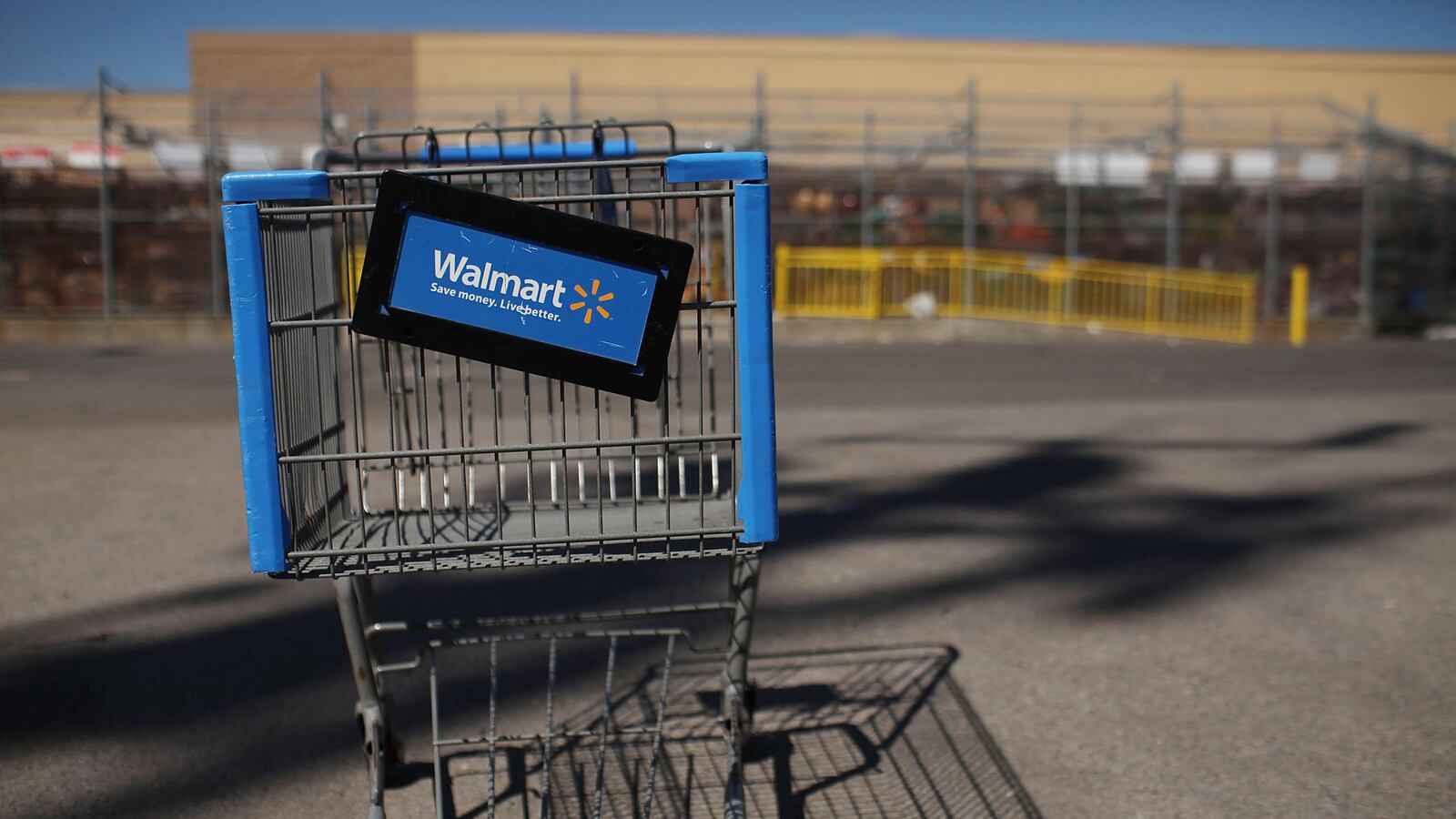Walmart is about to teach everybody a lesson in how austerity can affect the consumer economy—and quick.

Food-stamp benefits are being cut starting today by about $5 billion this year, or about 5 percent. The number of people enrolled in the Supplemental Nutrition Assistance Program has exploded in the last several years, in part because the recession made a lot of Americans poorer, and hence eligible for the food stamps, and in part because the Obama administration expanded eligibility for the program in 2010.
Because wages have been stagnant even as the economy has been growing for more than five years, the number of users remains extraordinarily high—at about 47.6 million. (More than half of able-bodied SNAP recipients work in the year in which they receive benefits.) That’s below the peak of 47.8 million in December 2012, but it’s still extraordinarily high. With the expanded efforts expiring, there was no move in Congress to continue the largesse. In fact, Republicans in the House want to cut the program further.
That’s bad news for the families that rely on the program to put food on the table. It’s also bad news for the huge retailers who cater to the large number of people clustered on the lower rungs of America’s income scale, including the nation’s largest retailer, Walmart.
Here’s why. Critics tend to think of food stamps as a form of welfare. They are—for the people who get them, and for the stores at which they are spent.
In Friday’s Wall Street Journal, Shelly Banjo and Annie Gasparro reported “Walmart estimates it rakes in about 18 percent of total U.S. outlays on food stamps. That would mean it pulled in $14 billion of the $80 billion the USDA says was appropriated for food stamps in the year ended in September 2012.”
Think about that for a minute. Walmart accounts for about 10 percent of total U.S. sales but gets 18 percent of the nation’s food-stamp-related sales. That means it punches well above its weight compared with other retailers. Put another way, Walmart customers are far more likely than shoppers at other stores to finance their purchases with food stamps.
For stores like Walmart, which sells groceries and other goods to the same customers, the food-stamp cut will be a double-whammy. They’ll have fewer funds to spend on food, and they will likely compensate for the reduced income by spending less on discretionary goods, like Christmas presents.
Bill Simon, president and chief executive of Walmart U.S., last month (PDF) downplayed the potential threat of food-stamp cuts. “I would say we’re cautious but modestly optimistic.” Why? Well, Simon said, “when the benefits expanded, our market share actually went down.” (Translation: When people had more money to spend, they were more likely to go to places other than Walmart.) And so with customers who lose benefits becoming more price-sensitive—“in other words, everybody’s benefit is going to get cut, price will become more important. And when price is more important, we’re more relevant.” All of which is to say that Walmart is counting on the rising desperation of its customers to drive sales.
I suppose that’s possible. But Simon seems to be misreading his own sales figures. Walmart has been losing market share for the last several years, and it’s not because its customers are getting richer. Rather, it’s because its customers don’t have money to spend. And that’s largely due to the fact that big employers of low-wage workers haven’t been willing to raise wages even as their profits have recovered. Check out page 19 of Walmart’s 2012 annual report (PDF). In 2012, sales at U.S. Walmart stores rose just 1.5 percent. In 2011, they rose just 0.1 percent. And in 2010, they rose 1.1 percent. In the most recent quarter, total Walmart U.S. sales rose just 0.3 percent from the year before.
Even with the tailwinds of expanded unemployment benefits and food stamps, and 44 straight months of jobs growth in the U.S. economy, Walmart has been unable to increase its U.S. sales at the level of economic growth, or at the level of inflation.
Now, this food-stamps cut is a minor headwind. Assuming $5 billion in annual cuts, Walmart will see about $900 million less in sales over the course of the year. But given that Walmart’s sales grew by only $3.9 billion in all of 2012, the company really needs every billion of sales it can get. Walmart and its peers operate on very thin margins. They have big fixed overhead costs (stores, labor, energy, inventory), and the only way they thrive is by moving ever-larger quantities of products through the system. Every little bit counts.
Regardless of what one thinks about the propriety of food-stamp benefit expansions or cuts, here’s the reality: The business of America’s largest retailer and one of the nation’s most valuable companies—a stock that every index fund owns—is structured in part on the continued flow of federal assistance.





